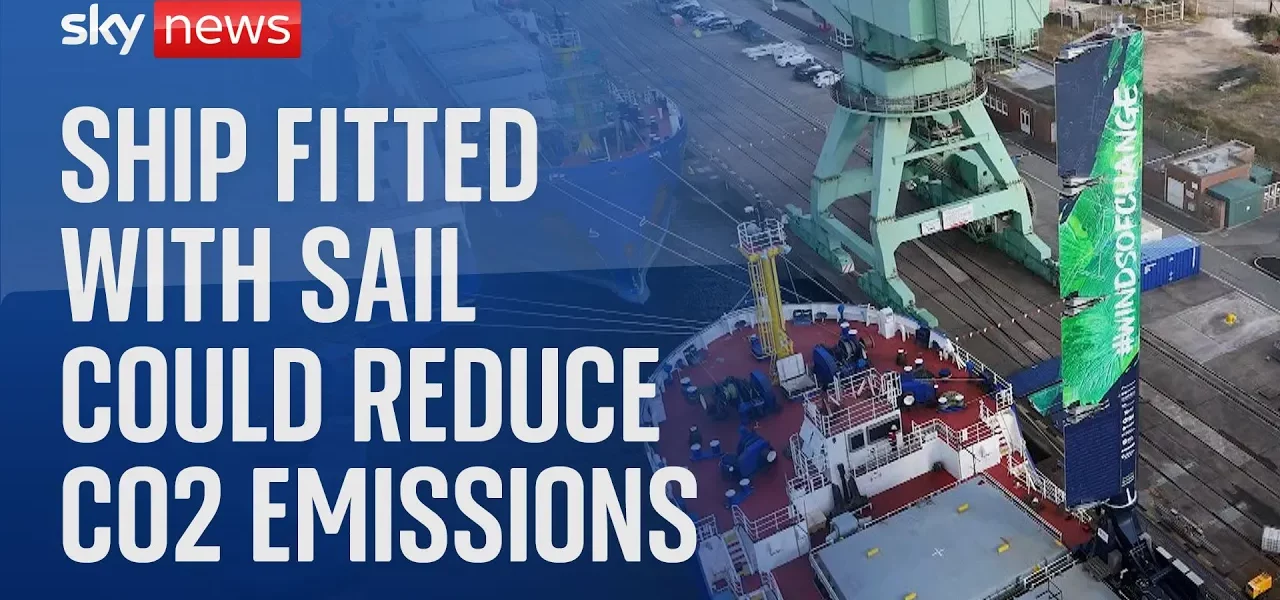Innovative Retractable Rigid Sails: A Modern Solution for Shipping Emissions

In the face of rising carbon emissions and fuel costs in the maritime industry, modern solutions are being explored. This article delves into the groundbreaking use of retractable rigid sails on British ships, which promises to harness wind power to reduce reliance on fuel and mitigate environmental impacts.
Introduction
The maritime industry has long faced criticism for its significant contributions to global carbon emissions. Innovative solutions are essential to combat this pressing issue, and one promising approach involves the integration of retractable rigid sails on ships. These sails, resembling aircraft wings more than traditional canvas, offer a modern twist on an age-old method of harnessing wind power to propel vessels. This article explores the technology, its implementation, and potential benefits for the shipping industry.
The Technology Behind Retractable Rigid Sails
The retractable rigid sail technology is designed to maximize efficiency and reduce environmental impact. Unlike conventional sails, which can be cumbersome and less efficient, these sails are engineered to function as aerodynamic wings. Their design allows them to harness wind energy effectively, translating it into propulsion for ships. This section will cover the key features and advantages of this technology.
Key Features
- Aerodynamic Design: Mimics the shape of an aircraft wing to capture wind efficiently.
- Retractable Mechanism: Allows for easy deployment and retraction based on weather conditions.
- Compatibility: Can be retrofitted to existing vessels, minimizing the need for new ship designs.
Advantages
- Reduced Fuel Costs: Utilizing wind as a supplementary power source can significantly lower fuel expenses.
- Lower Carbon Emissions: Incorporating wind power helps in decreasing the overall carbon footprint of maritime operations.
- Efficiency Gains: Even a modest increase in efficiency can translate into substantial savings over long voyages.
The Sea Trial: A Step Towards Implementation
To validate the effectiveness of the retractable rigid sails, a sea trial was conducted with a British nuclear transport vessel. This trial is pivotal in determining how well the technology performs in real-world maritime conditions. The vessel selected for this trial is not just any ship; it is specifically engineered for the secure transportation of nuclear materials.
About the Nuclear Transport Vessel
This vessel is designed with safety and security in mind, housing secure holds shielded against radiation to protect the crew and the environment. Key features include:
- Double Hull Construction: Enhances safety and structural integrity.
- Advanced Security Systems: Ensures safe transport of high-level nuclear waste.
- High Efficiency: Capable of long-distance voyages without refueling.
Trial Objectives
The primary objectives of the sea trial include:
- To test the sail’s performance in ocean conditions.
- To evaluate the potential fuel savings during a typical voyage.
- To assess the overall impact on operational efficiency.
Potential Industry Impact
If successful, the integration of retractable rigid sails could revolutionize the maritime shipping industry. With global shipping facing pressure from rising fuel costs and stringent emissions regulations, this technology presents a viable solution for many operators. This section explores the broader implications of this innovation.
Broader Applications
The success of this technology could pave the way for its adoption across various types of vessels, including:
- Container ships
- Bulk carriers
- Tankers
Economic Benefits
Implementing retractable sails could result in significant economic advantages, including:
- Cost savings on fuel leading to improved profit margins.
- Enhanced competitiveness in the global shipping market.
- Value for taxpayers through government-owned shipping operations.
Conclusion
The trial of retractable rigid sails on a British nuclear transport vessel marks a significant step towards a more sustainable maritime industry. By harnessing wind power, shipping companies can reduce fuel costs and lower carbon emissions, contributing to a greener future. As the industry grapples with the dual challenges of rising costs and environmental responsibilities, innovations like these offer hope. To stay updated on developments in maritime technology and sustainability, subscribe to our newsletter.
“`




